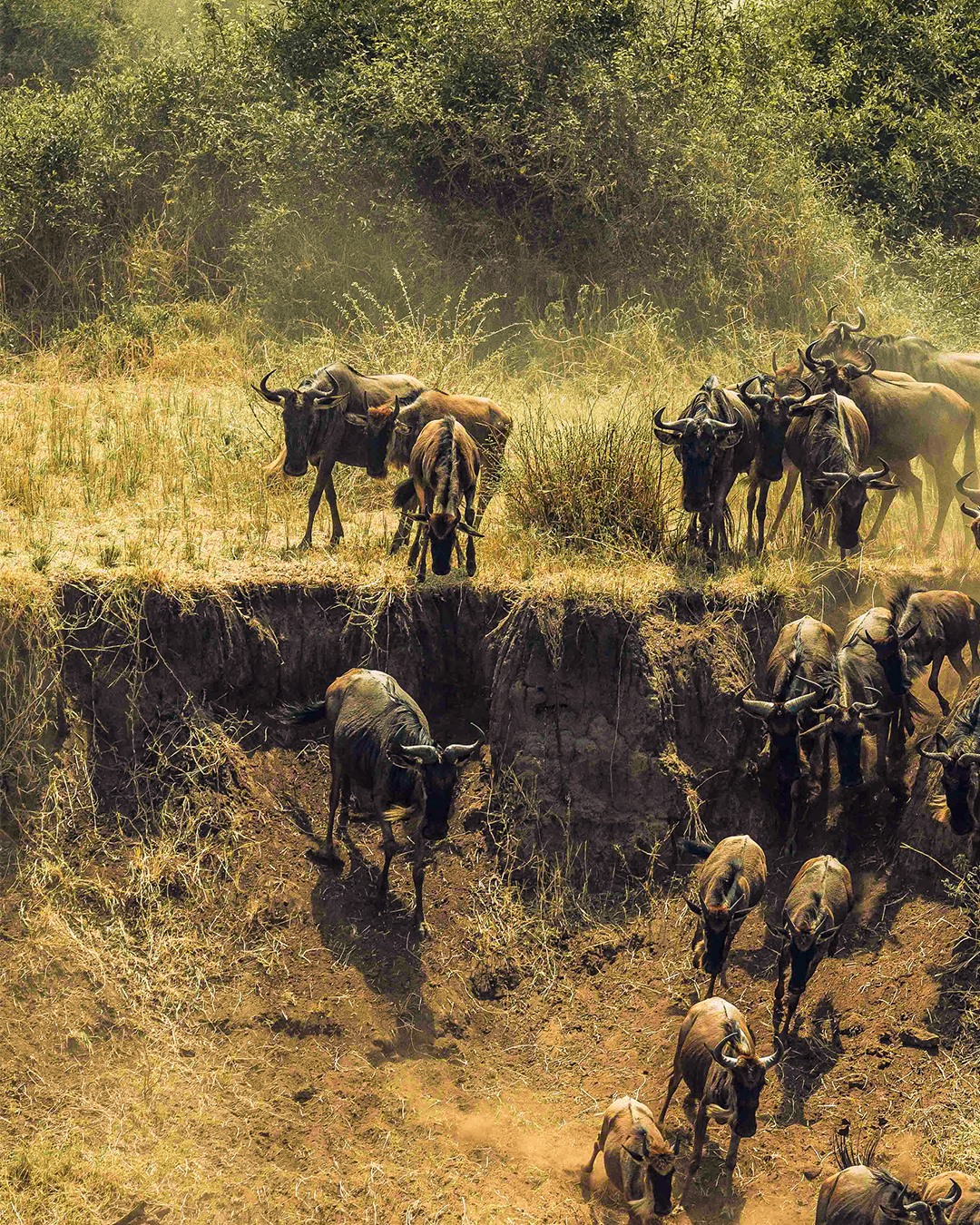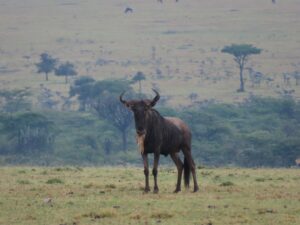Sometimes called the “little brother” of the Great Migration, the Loita Hills of the northern Masai Mara region host a smaller but no less spectacular animal movement each year — the passage of 30,000 or more wildebeest.
The herds arrive in May, accompanied by other antelope searching for fresh fodder. They often linger in the Loita Hills and adjoining plains until early the following year, grazing on abundant grass that isn’t available in other parts of the Mara or Serengeti. That makes Loita an almost year-round spectacle rather than a transitory event.
That also means the herds are roaming back and forth across the Loita landscape during the calving seasons (January to March) when the baby wildebeest are born.
The Loita Hills Migration doesn’t feature the dramatic river crossings of the Great Migration. But some experts feel it affords an even better chance of observing the relationship between the wildebeest and the resident carnivores that prey on them.
Located just west of the Loita Hills, Mara Siana Camp offers an ideal base for catching both the Great Migration between July and October and the extended Little Migration across the Loita Hills.


0 Comments